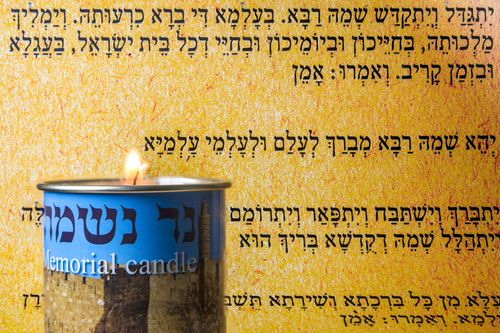 Prayer is a concept that transcends religions and cultures. We call out to forces larger than ourselves in times of joy, sorrow, anger, frustration, confusion, and other emotionally charged times. Grief is no different, and the Mourner’s Kaddish offers a fascinating look into the human heart. Recited by Jewish people after the deaths of their loved ones, the Kaddish speaks to a hope that lies beyond their immediate grief.
Prayer is a concept that transcends religions and cultures. We call out to forces larger than ourselves in times of joy, sorrow, anger, frustration, confusion, and other emotionally charged times. Grief is no different, and the Mourner’s Kaddish offers a fascinating look into the human heart. Recited by Jewish people after the deaths of their loved ones, the Kaddish speaks to a hope that lies beyond their immediate grief.
The Origins of the Kaddish
The Jewish Virtual Library explains that kaddish translates from Hebrew as “sanctification,” which Dictionary.com describes as setting something apart to be sacred, holy, or consecrated. The Kaddish sanctifies God’s name, the JVL clarifies, and requires a quorum of 10 Jewish adults to recite. Portions of the full Kaddish were often used in public worship or prayer to indicate the ending of services or each segment of a service.
The JVL further states that a 13th-century writing on Jewish religious law referred to a “Kaddish Yatom,” also known as the “Orphan’s Kaddish.” My Jewish Learning adds that this manifested during a time in which Jewish people were heavily persecuted in Europe. The text of the Mourner’s Kaddish is in Aramaic instead of Hebrew, which likely occurred during the Babylonian Exile when Aramaic was the chief language in the region.
A Prayer Full of Praises
The beginning of the Mourner’s Kaddish borrows from Ezekiel 38:23, describing a future in which God is great and known among all the nations. That fits with the main prayer’s theme of sanctifying God’s name. The lines that follow praise God and express hope for peace, along with the establishment of God’s kingdom on Earth. My Jewish Learning provides the Aramaic text, a transliteration of that text, and an English translation.
The Mourner’s Kaddish is specifically recited during avelut, which means “mourning” in Hebrew and is observed after a close loved one dies. First-degree relatives, including siblings, spouses, parents, and children, grieve in a few distinct stages: aninut, right before the burial; shiva, the seven days immediately after the funeral; and sheloshim, the 30 days set aside to help the bereaved return to daily life. The Kaddish is recited daily during shiva, sheloshim, and the following 11 months if an individual is mourning a deceased parent. This Kaddish is usually recited in a shiva minyan, a prayer service that includes a group of at least 10 Jewish adults.
How Praise Fits In With Grief
It’s easy to wonder why a prayer of praising appears among mourning customs. After all, the Mourner’s Kaddish contains no references to death. The Jewish Virtual Library mentions three possible explanations for this. Some see it as a recognition of divine judgment and righteousness, remembering that God is present and just during a time of great emotional trials. Others believe it may be a way to boost a deceased person’s distinction and excellence by publicly praising God. The JVL points out that it can allow people to honor their deceased parents after they’re gone.
Another piece from My Jewish Learning elaborates on these explanations. The Kaddish may have served as a testimony that the deceased’s family were honorable, worthy, and loyal to God. The text embodies a life-affirming tone, providing some solace when one mourns. The article also comments that the Jewish faith emphasizes life, so death is seen as diminishing the divine presence in the world. The Kaddish, which calls for God’s greater presence in the world, is meant to combat what death takes away.
Light To Illuminate the Darkness
Whether a belief system recognizes a single god, multiple deities, nature spirits, ancestors, or other supernatural beings, prayer is our way of communicating with them. Prayer can take many forms, even seeking comfort amid grief. The Mourner’s Kaddish is a perfect example, shining a light of hope and celebration in the darkness of sorrow.